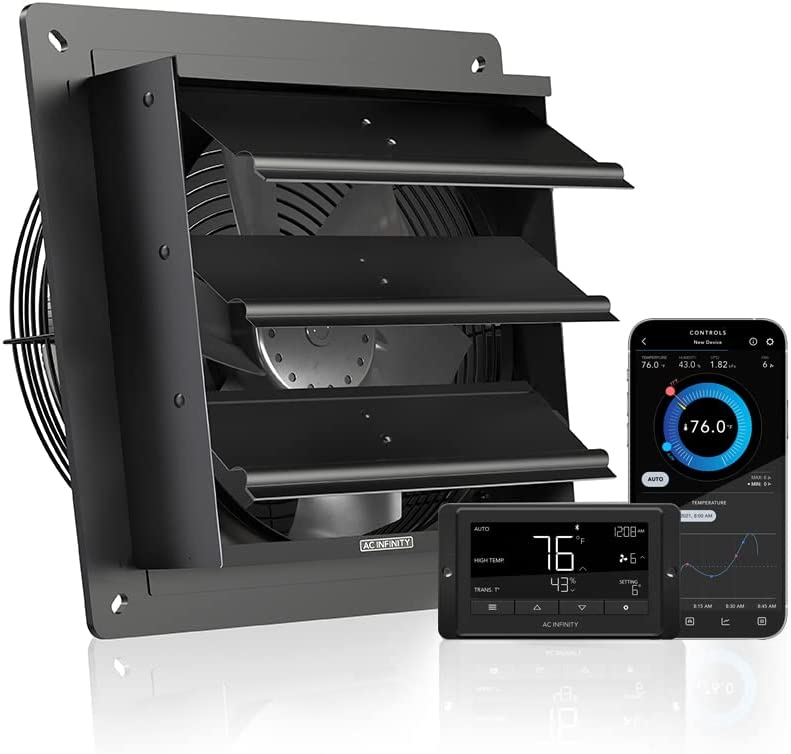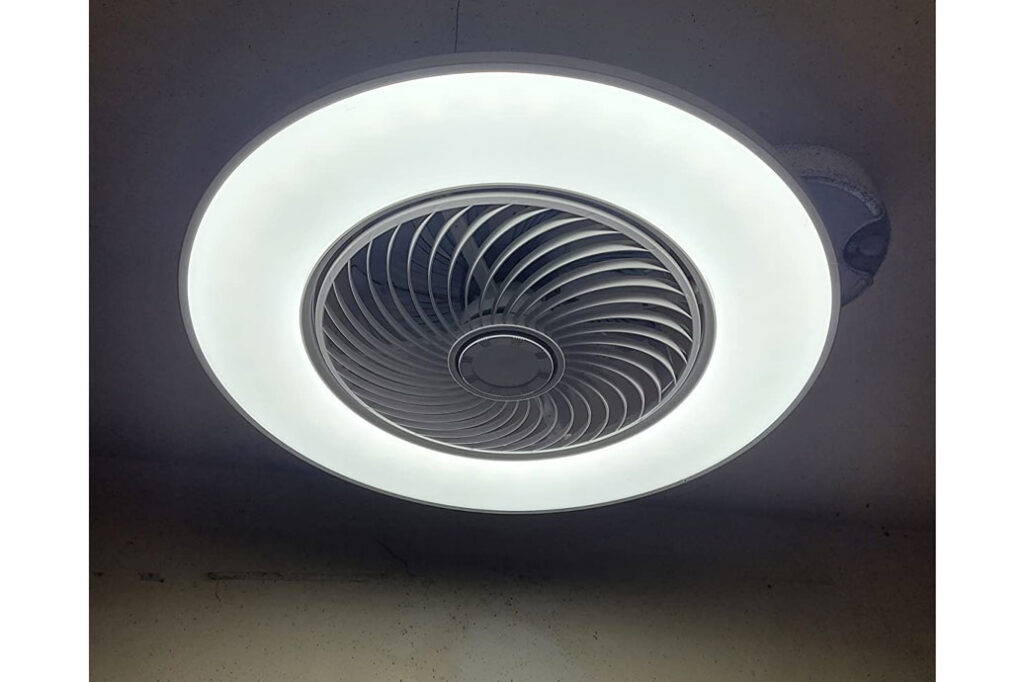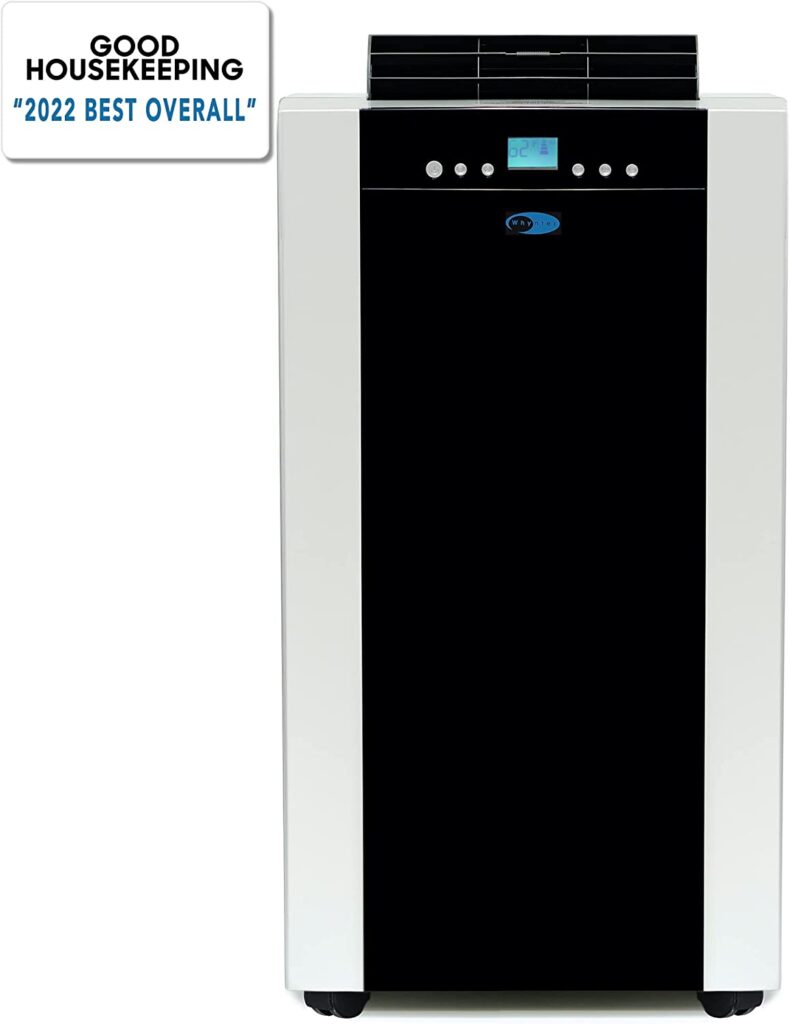Ceiling fan alternatives for low ceilings can be a challenge to find in the home improvement market. Low ceiling heights often make it difficult for homeowners to purchase fans that don’t hang down too low.
The option varies from wall-mounted fan, scillating pedestal fan, or even table fan.
There are several creative solutions that can provide air circulation and an updated aesthetic without having to sacrifice space. Check these out!
Best Fans for Low Ceilings

Are you stuck with a low ceiling that limits your choice of ceiling fans? Don’t worry! You can still enjoy comfortable air circulation in any room with these great alternatives to traditional ceiling fans.
In this article, you’ll discover what options are available and how to choose the perfect one for your space:
Tower Fan

Tower fans are an ideal alternative for those with low ceilings. These tall, streamlined fans are space-saving and perfect for any room with a lower ceiling height. Their sleek design fits well in modern homes and apartments without taking up too much space visually or physically.
A tower fan typically runs by remote control and allows you to adjust temperatures while easily circulating cool air throughout the home. The oscillating option also allows a tower fan to move hot air upward, helping to keep things cool in small spaces.
Tower fans are quiet, efficient and generally cost less than ceiling fans, making them a great choice for low ceilings!
Box Fans

If the clearance to your ceiling is less than 7 feet, box fans can be an attractive and effective alternative to traditional ceiling fans.
Box fans come in an array of sizes, from smaller models ideal for laying on your small bed or small areas to larger units that are suitable for living rooms or other large open spaces. Plus, box fans typically have different settings so you can adjust the power level to meet your needs.
Many models also feature oscillation capabilities that help spread air throughout the area. Additionally, many are affordable and easy to install since they don’t require any additional wiring or complicated mounting hardware.
Though they may not be as efficient or stylish as a traditional ceiling fan, they provide a low-cost cooling option when space is limited.
Attic Fans

Attic fans are a great way to save energy and money without compromising on comfort. They work by drawing in hot air from the outside, which helps keep your home cooler in the summer and warm in the winter. In addition, it can help ventilate your attic, reducing indoor air quality problems caused by excess moisture buildup.
Installing an attic fan can be quite easy if you have enough space between the ceiling joists – you can either cut a hole in the interior drywall or shiplap to mount the fan or install a frame assembly between two rafters.
When heated air is expelled out of the house, it creates a negative pressure within the house that pulls cooler outside air into your home. This process helps to lower humidity levels and reduce your energy costs since less energy is needed to cool those areas of your house that need extra ventilation.
The airflow from an attic fan should be sufficient for most rooms with low ceilings, allowing cooler outside air to enter while efficiently pushing traps hot air up and out of your home.
This process will also help reduce dust particles throughout your home as these are typically present in warm rising air. By properly managing airflow throughout your home with attic fans, you could see an improvement in year-round comfort levels and lower utility bills month after month.
Pedestal Fan

Pedestal fans represent an excellent alternative to ceiling fans for homes with low ceilings. Pedestal fans have a sleek, space-saving design that is ideal for small rooms and tight spaces. Pedestal fans can be easily adjusted using a base adjustment dial or handheld remotes, giving you full control over the direction and intensity of airflow.
Features like oscillation, adjustability, low energy consumption, remote control capabilities and built-in temperature sensors make them a great option for cooling without taking up too much space. Keeping your home cool without sacrificing style is easy with a pedestal fan.
Table Fan

Table fan is one of the best alternatives for those who have a low ceiling and are looking for a cooling fan. It can be placed on top of a table or shelf, depending on your preference.
These fans are designed to deliver air at an angle that optimizes air circulation. They also generally have oscillation features for diversified air distribution. Table fans are lightweight and easy to move, making them great options for people who want convenience and have limited ceiling space.
Additionally, the wind speed of table fans can usually be adjusted from low to high according to individual preferences.
Window Fan

Window fans are an excellent, budget-friendly option for homes with low ceilings. Installed in a window, this fan moves air between the interior and the exterior of the home, cooling your space quickly and efficiently.
Generally, window fans come with two or three speeds and may include features such as timer control or reverse airflow capability. They’re easy to install and can be combined with other cooling options such as ceiling fans or air conditioners.
A window fan is a good solution for small rooms without much ventilation – it’s an economical choice that helps improve air circulation in the home and reduce energy costs.
Bladeless Ceiling Fan

Bladeless ceiling fans are becoming a popular alternative for rooms with low ceilings. By moving air more efficiently than traditional fan blades, bladeless fans provide an effective and attractive solution that works well in small spaces.
These fans use a specially designed motor and centrifugal force to to circulate air without the noise or mess of traditional fan blades.
Not only do they save space, they also look better when compared to bulky fans with blades. Most models feature remote controls so you can adjust the speeds and oscillation from across the room.
They also come with additional features such as timers, adjustable speeds, and reversible motor settings for winter/summer use.
Bladeless ceiling fans are an attractive solution that provides efficiency and convenience in any room size or style.
Wall Mounted Fan

For those with very low ceilings, a wall mounted fan can be an ideal choice for providing cooling comfort in the home. Wall mounted fans can be a less expensive option than ceiling fans, but still provide excellent air circulation. They are also great for small spaces as they don’t require any floor space.
Wall mounted fans are typically equipped with adjustable speeds and directional oscillation – helping you to control the direction of the airflow and target areas that need more air motion.
Additionally, some wall mounted fans have remote controls or smart tracking capability which allow them to sense where your body is located in the room – directing airflow exactly where you need it.
Wall mounted fan models also come in numerous sizes and configurations, offering you greater flexibility in terms of style and design as well as air flow power and speed.
Air Purifier And Fan Combo

For those who don’t have enough space for a ceiling fan, a great alternative is an air purifier and fan combo. This type of appliance will help to remove allergens from the air and circulate it at the same time without taking up any valuable headroom.
There are several different types available in the marketplace, from wall-mounted models to console-style units that can fit in any room. Depending on your needs and budget, features such as adjustable speeds, variable oscillation options, timer settings, and remote controls are all possible selections.
For those with allergies or asthma, an air purifier may be just what you need to provide healthy air circulation while eliminating irritating particles from the environment. Additionally, some will also feature ultra-violet (UV) technology which effectively eliminates airborne germs, bacteria and viruses before they reach your respiratory system.
Evaporative Cooler

Evaporative coolers, also known as “swamp coolers”, are an alternative to traditional ceiling fans. These systems work by pushing humidified air through a ventilation grid thereby cooling the room. This is a great option for people with low ceilings because the systems are generally installed on the floor or just above the windows.
Advantages of using an evaporative cooler include a low upfront cost and easy installation. Plus, operating costs for this type of cooling system can be quite low compared to air conditioners and other types of cooling systems. Additionally, evaporative coolers don’t require separate ductwork nor do they encroach on your living space as much as larger machines.
Disadvantages of using an evaporative cooler include a limited range—they usually only work in specific climates with low humidity levels—and also their operational noise. Because these systems use moving parts to push humidified air through the ventilation grid they can be quite noisy when running at full capacity.
Finally, these types of coolers should not be used if you have allergies or asthma because they can potentially worsen these symptoms due to their release of humidified air into your space.
Window AC

Window air conditioners (ACs) are a great alternative to ceiling fans for those with low ceilings. They provide the same cooling, cost-saving features of ceiling fans in an easier, more discrete way.
Window ACs have a narrow profile that allows them to be installed in standard-size windows without sacrificing too much of the window’s opening space. Depending on the size of your room, they are available in models that cover anywhere from five hundred to one thousand square feet. They are also energy efficient and come with built-in timers and programmable thermostats, so you can customize them to suit your needs.
Additionally, many models come with air filters that help remove pollutants from inside your home. Window ACs may not offer the same aesthetic appeal as ceiling fans, but their convenience and energy efficiency make them a great choice for those who need a little extra cooling power but don’t want to sacrifice style or comfort.
Portable AC

A portable air conditioner is an excellent alternative to a ceiling fan for homes or buildings with low ceilings. Unlike ceiling fans, which move the air around a room to create a cooling effect, portable AC units decrease the temperature of the room by actually cooling the air. They also provide better coverage than ceiling fans as they can be moved from one area of the room to another as needed.
Portable AC units are easy to install and maintain, use significantly less power than central air conditioning systems, and are perfect for smaller spaces such as a bedroom or living room. With lighter models of portable AC now available, these units can also be used in mobile homes or recreational vehicles.
When looking for a portable AC unit, it’s important to consider factors like noise level and energy efficiency ratings.
FAQ: Ceiling Fan Options
What is the lowest ceiling height for a ceiling fan?
Most manufacturers recommend installing fans no lower than 7 feet above floor level. If your ceilings are lower than this, you won’t be able to use regular size fans safely. However, there are some low-profile or “hugger” style fans that can work in rooms with 6-foot or lower ceilings. These fans have shorter blades that hang closer to the ceiling and don’t require as much clearance for safe operation.
What happens if a fan is too big for a room?
Having an oversized fan can create numerous problems such as drafts, noise, and even make it difficult to move around the room. If you have purchased an oversize fan without measuring the area first, it can be difficult to fit it into a corner or near windows without blocking them off completely.
Additionally, having too much air flow in one direction can lead to uncomfortable drafts that may cause headaches and dizziness due to temperature imbalances throughout the room. Furthermore, since larger fans are designed with more blades than smaller ones they tend to be louder which can cause sleep disruption during bedtime hours.
Is it OK to sleep with a fan on you all night?
It depends on your own personal preference. On one hand, the sound of the fan can help lull you into a deep slumber and provide white noise that blocks out other distracting noises while you’re trying to sleep. Additionally, some people use fans as an economical way to cool down their bedroom during hot summer months when air conditioning may not be available or practical.
Are ceiling fan Downrods necessary?
Downrods are metal rods that attach to your ceiling fan and allow you to adjust its height for better air circulation. While not all ceiling fans require them, downrods can be an important part of maximizing your fan’s effectiveness.
Downrods come in different lengths, allowing you to adjust the fan to the ideal height for optimal air flow. The higher the fan is mounted, the better it will move air throughout a room. If you have high ceilings, a downrod may be essential in order to get good results from your fan.
“There is no real ending. It’s just the place where you stop the story.”





